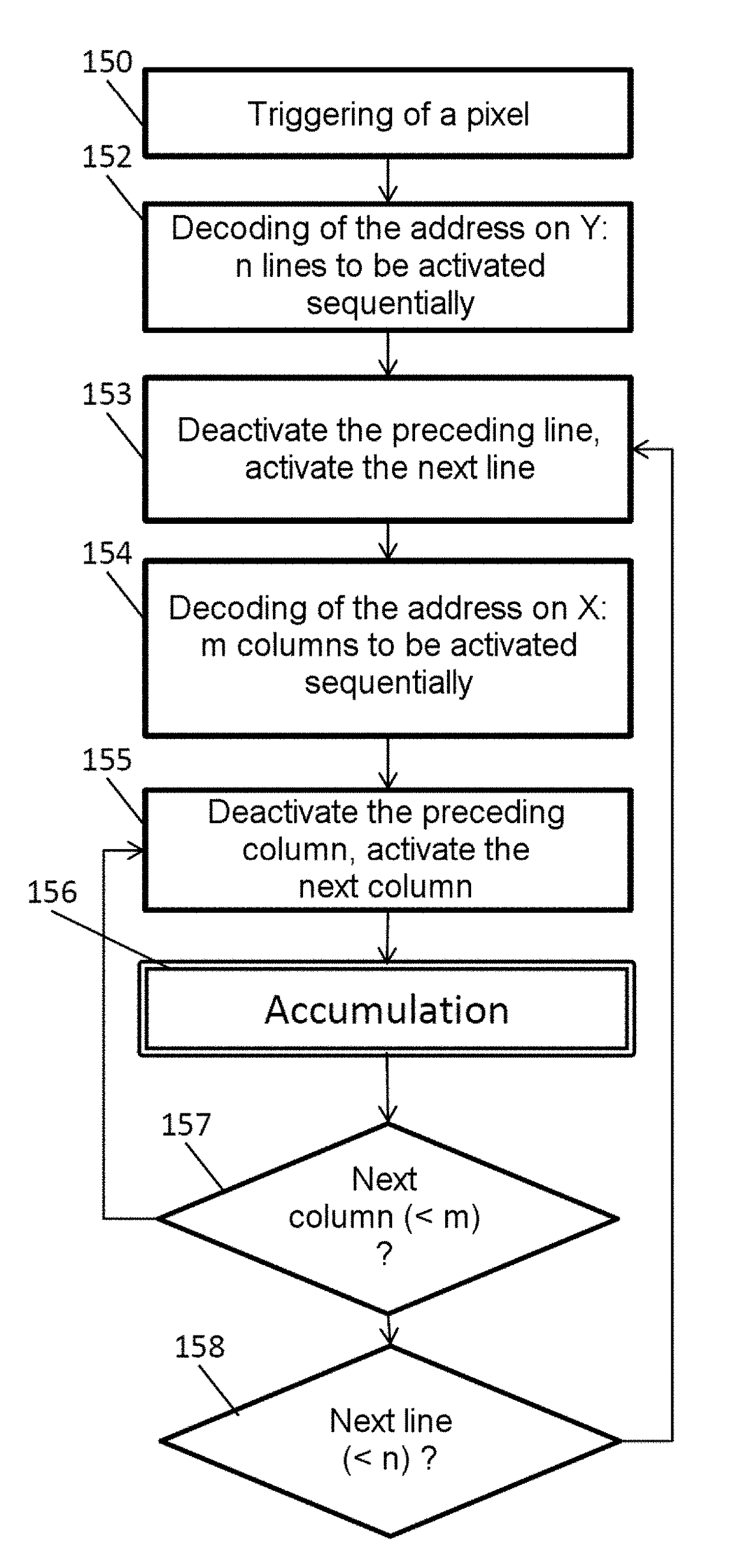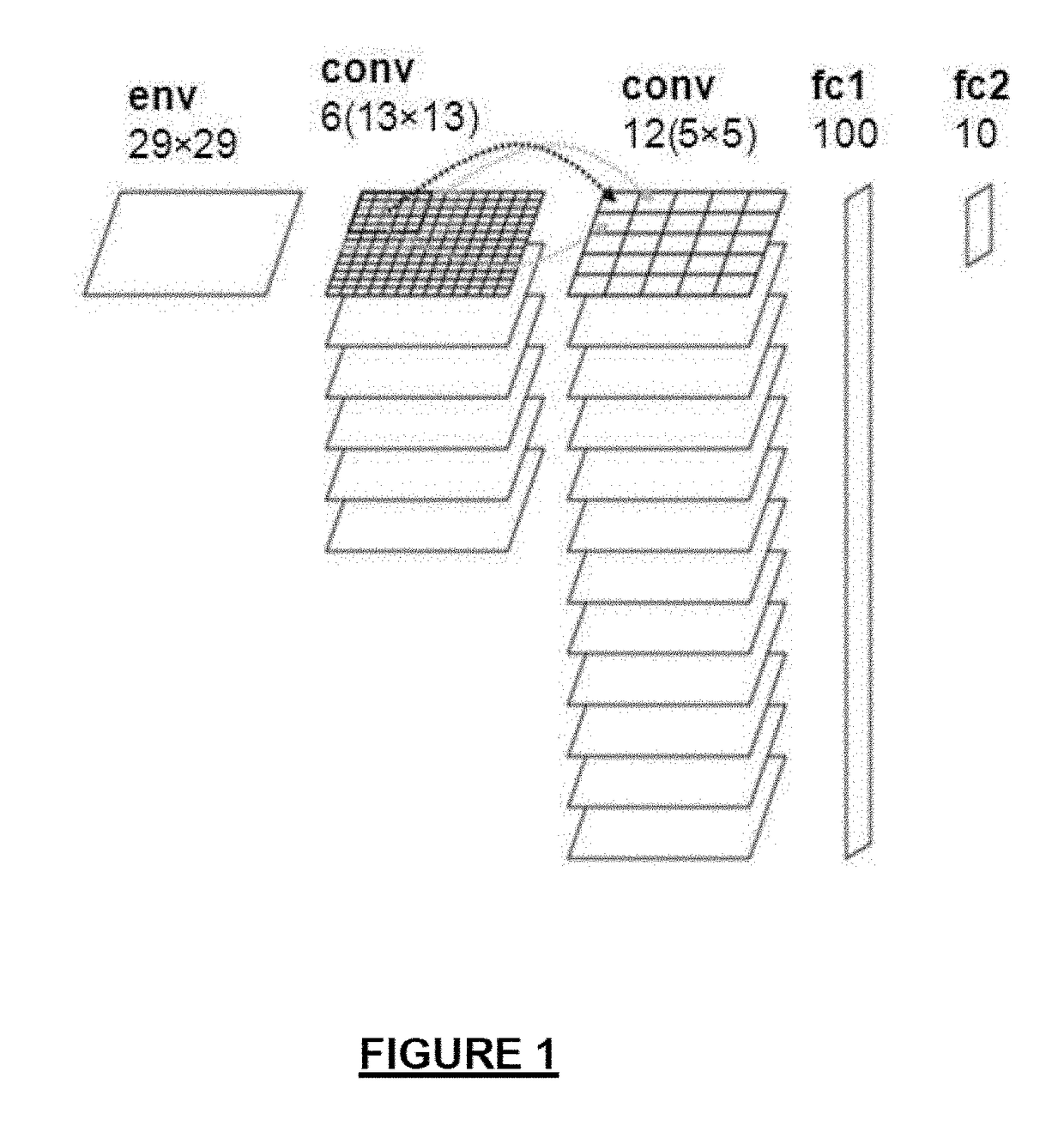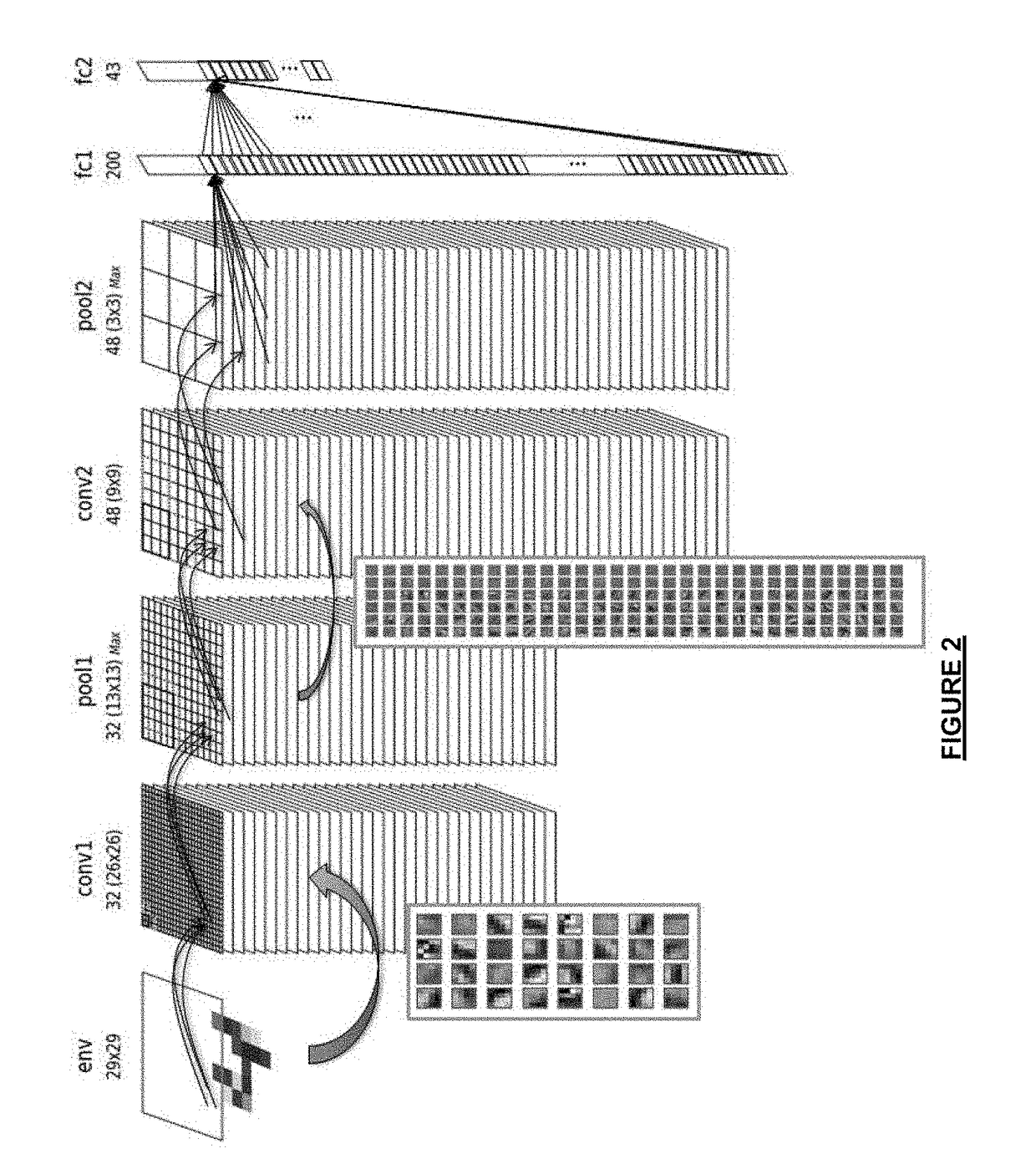Convolutional neural network
a neural network and convolutional technology, applied in the field of artificial neural networks, can solve the problems of significant processing time, significant energy consumption, and limited solutions, and achieve the effect of improving the speed and energy efficiency of the operation
- Summary
- Abstract
- Description
- Claims
- Application Information
AI Technical Summary
Benefits of technology
Problems solved by technology
Method used
Image
Examples
Embodiment Construction
[0064]FIG. 2 represents an example of a convolutional network including pooling layers for the classification of images. The images at the bottom of FIG. 2 represent an extract of the convolution kernels of the first layer, after a learning of gradient backpropagation type, on an image base such as ImageNet.
[0065]An artificial neural network (also called “formal” neural network or simply called “neural network” hereinbelow) consists of one or more layers of neurons, interconnected with one another. Each layer is made up of a set of neurons, which are connected to one or more preceding layers. Each neuron of one layer can be connected to one or more neurons of one or more preceding layers. The last layer of the network is called “output layer”.
[0066]The neurons are connected together by synapses, or synaptic weights, which weight the efficiency of the connection between the neurons, constitute the adjustable parameters of a network and which store the information contained in the net...
PUM
 Login to View More
Login to View More Abstract
Description
Claims
Application Information
 Login to View More
Login to View More - R&D
- Intellectual Property
- Life Sciences
- Materials
- Tech Scout
- Unparalleled Data Quality
- Higher Quality Content
- 60% Fewer Hallucinations
Browse by: Latest US Patents, China's latest patents, Technical Efficacy Thesaurus, Application Domain, Technology Topic, Popular Technical Reports.
© 2025 PatSnap. All rights reserved.Legal|Privacy policy|Modern Slavery Act Transparency Statement|Sitemap|About US| Contact US: help@patsnap.com



